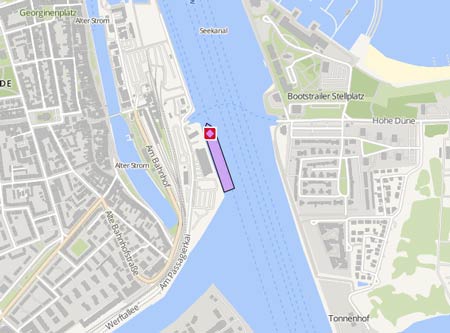MOL COMFORT
Course/Position
Latest ports
Latest Waypoints
Latest news
ClassNK released draft amendments as consequence of Mol Comfort loss
2,5 years after the "MOL Comfort" split in half, burst into flames and sank, ClassNK, a committee which is made up of representatives from the shipping and shipbuilding industries as well as scholars and experts to discuss matters relating to the establishment and revision of technical rules and guidance, has released its draft amendments to its containership structural requirements. The new requirements are scheduled to apply to container ships contracted for construction on or after 1 April 2016. The amendments are based on the International Association of Classification Societies (IACS) Unified Requirements S11A (‘Longitudinal strength standard for container ships’) and S34 (‘Functional requirements on load cases for strength assessment of container ships by finite element analysis’) as well as reports from Japan’s Ministry of Land, Infrastructure, Transport and Tourism (MLIT), and ClassNK’s own report released in September 2014. The amendments were approved by the ClassNK Technical Committee in Tokyo on Nov 19, 2015. In response to theship loss, ClassNK established the "Investigative Panel on Large Container Ship Safety", which comprised of shipbuilders, shipping companies and people with relevant knowledge and experience, to investigate the possibility of casualty occurrence and the structural safety of large container carriers. The results from the investigation and ClassNK’s action plan were released in the Investigation Report on Structural Safety of Large Container Ships in September 2014. Japan’s Ministry of Land, Infrastructure, Transport and Tourism (MLIT) Committee on Large Container Ship Safety released recommendations of requirements for large container ships in its Final Report in March 2015. Furthermore, the International Association of Classification Societies (IACS) adopted the new Longitudinal Strength Standard for Container Ships (Unified Requirement S11A) and Functional Requirements on Load Cases for Strength Assessment of Container Ships by Finite Element Analysis (Unified Requirement S34).
Claims of more than 500 millions against Mitsubishi Heavy Industries after ship and cargo loss
More than 100 persons have claims against Mitsubishi Heavy Industries (MHI) after the loss of the "MOL Comfort" which were coming to more than $500m. More than 100 claimants were supporting the Tokyo court legal action led by Mitsui OSK Lines (MOL). The claim was based on the fact that the "MOL Comfort" crumbled and sank in the Indian Ocean carryingd 4,382 containers. The amassed claims resulted to $501m and represented the biggest cargo claims led by Japanese insurance firms Tokyo Marine Nichido and Mitsui Sumitomo Marine. Allianz’s global claims estimates evaluate the insured loss of the ship to be $523m, including $440m from cargo loss and $83m from the body of the ship. Additional financial claims are being made by MOL against MHI including the renovation of the "MOL Comfort"’s sisterships fleet built in 2008 as a safety measure. MOL’s lawsuit, under product liability law, is both against faulty construction by the shipbuilder and as reported by TradeWinds- the fact that MHI failed to provide information about similar cracking happening onboard of a similar ship. Although Tokyo’s shared liability laws allow the two sides to agree with each other, MHI insists on fighting till the end to safeguard its reputation. According to legal experts the case may continue for more than seven years until the final solution, showing the example of a similar ongoing all-Japanese shipping case.
Danish Naval Architect Uncovers Important Clues to MOL Comfort’s Demise
Pretty much the entire world was caught by surprise when images of a huge crack in the fully laden containership MOL Comfort surfaced last summer. The ship design rules at the time should have mitigated such a situation from ever happening. While conducting research for her PhD thesis at the Technical University of Denmark, Ingrid Marie Vincent Andersen, PhD had found clues prior to this incident suggesting the possibility of catastrophic failure was more real than previously thought. Digging deep into the hydro-elastic structural response of containerships similar to the MOL Comfort, she had discovered some very interesting details. Clearly, the ship had broken up when the hull girders failed, but what led to that failure was not so obvious. She, like many others, say it very likely had a lot to do with the cargo loading condition of the ship, but the full answer was quite a bit more complicated than that. Anderson says the MOL Comfort and her sister vessels were simply under engineered by naval architects that didn’t fully account for enormous additional loads which were being placed on the ship. http://gcaptain.com/danish-naval-architect-uncovers-important-clues-mol-comforts-demise/
Upload News

